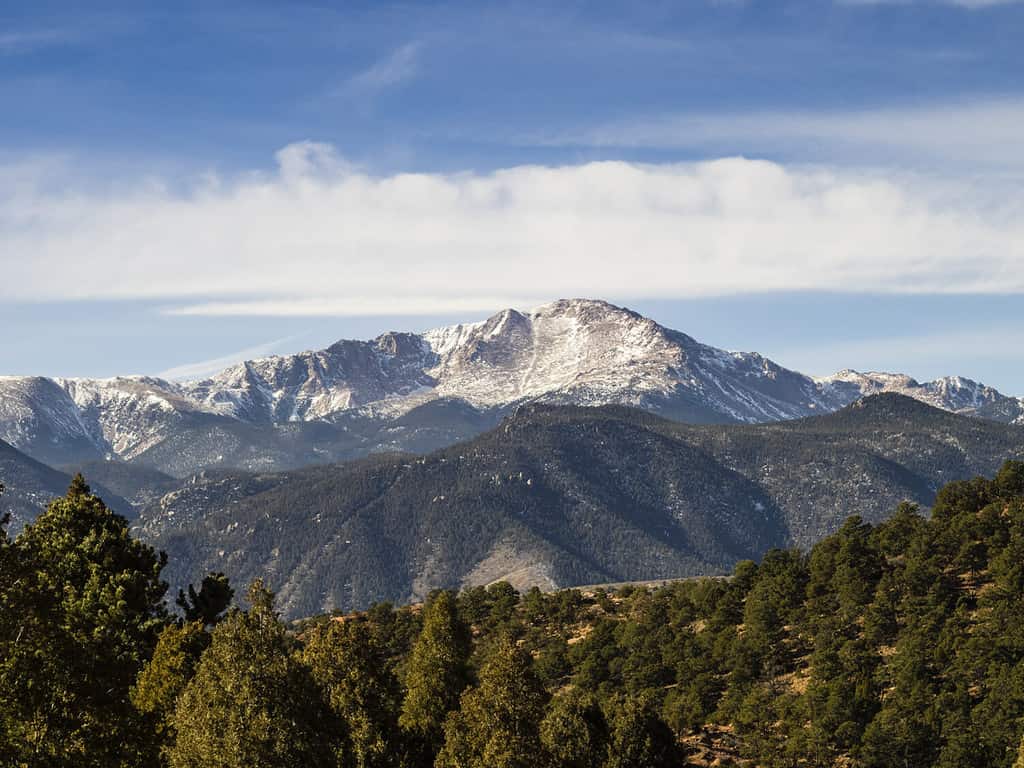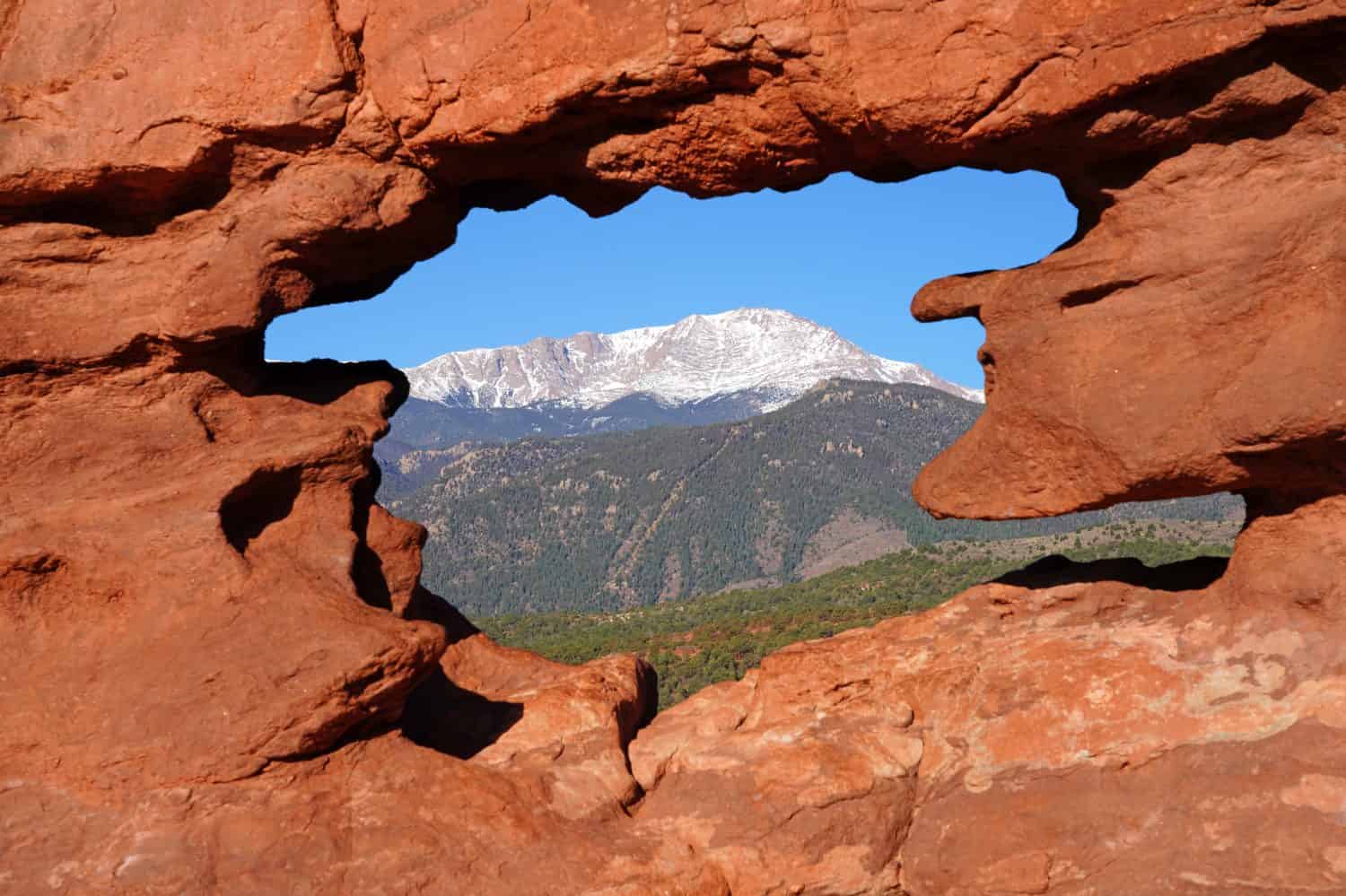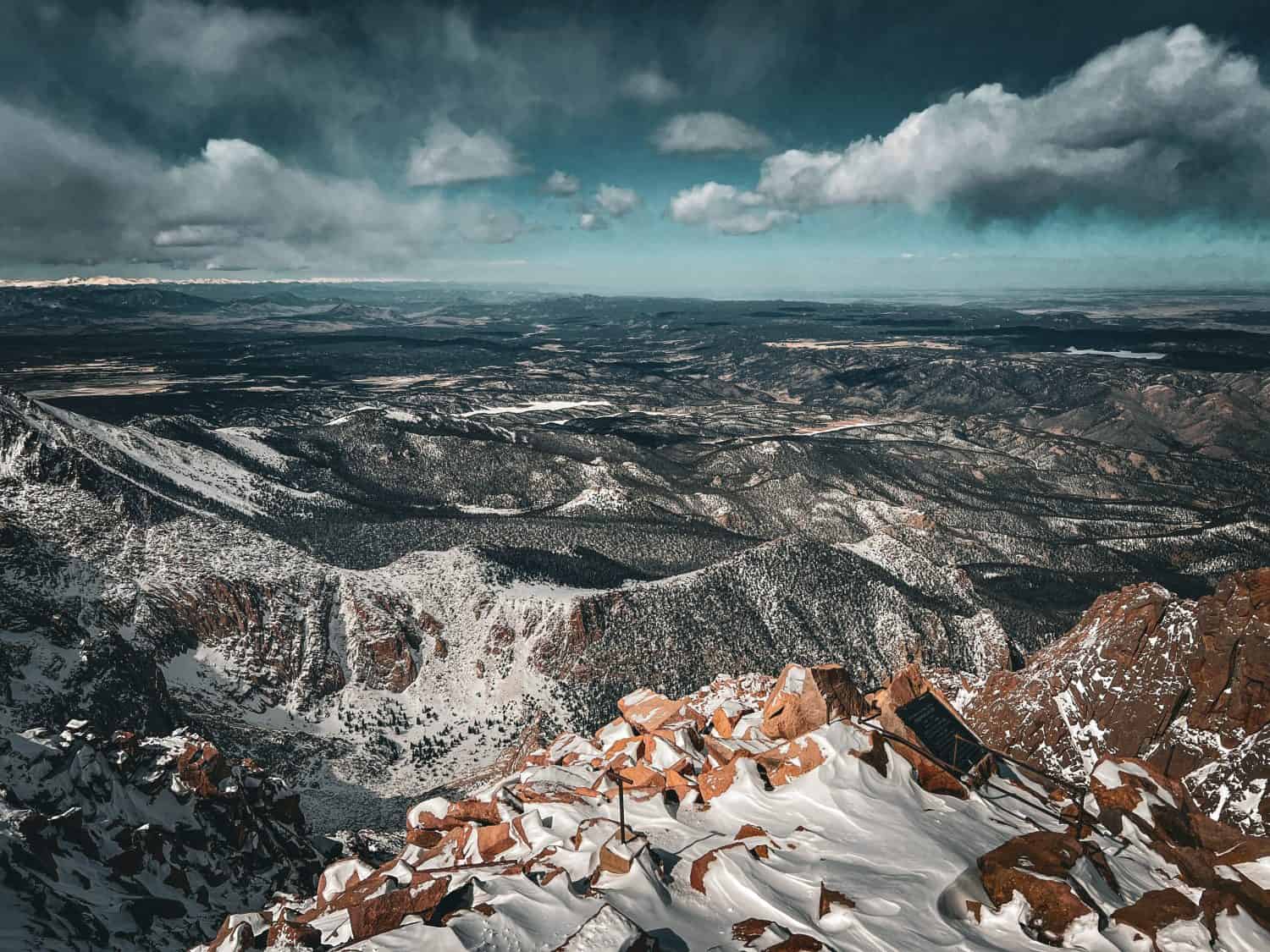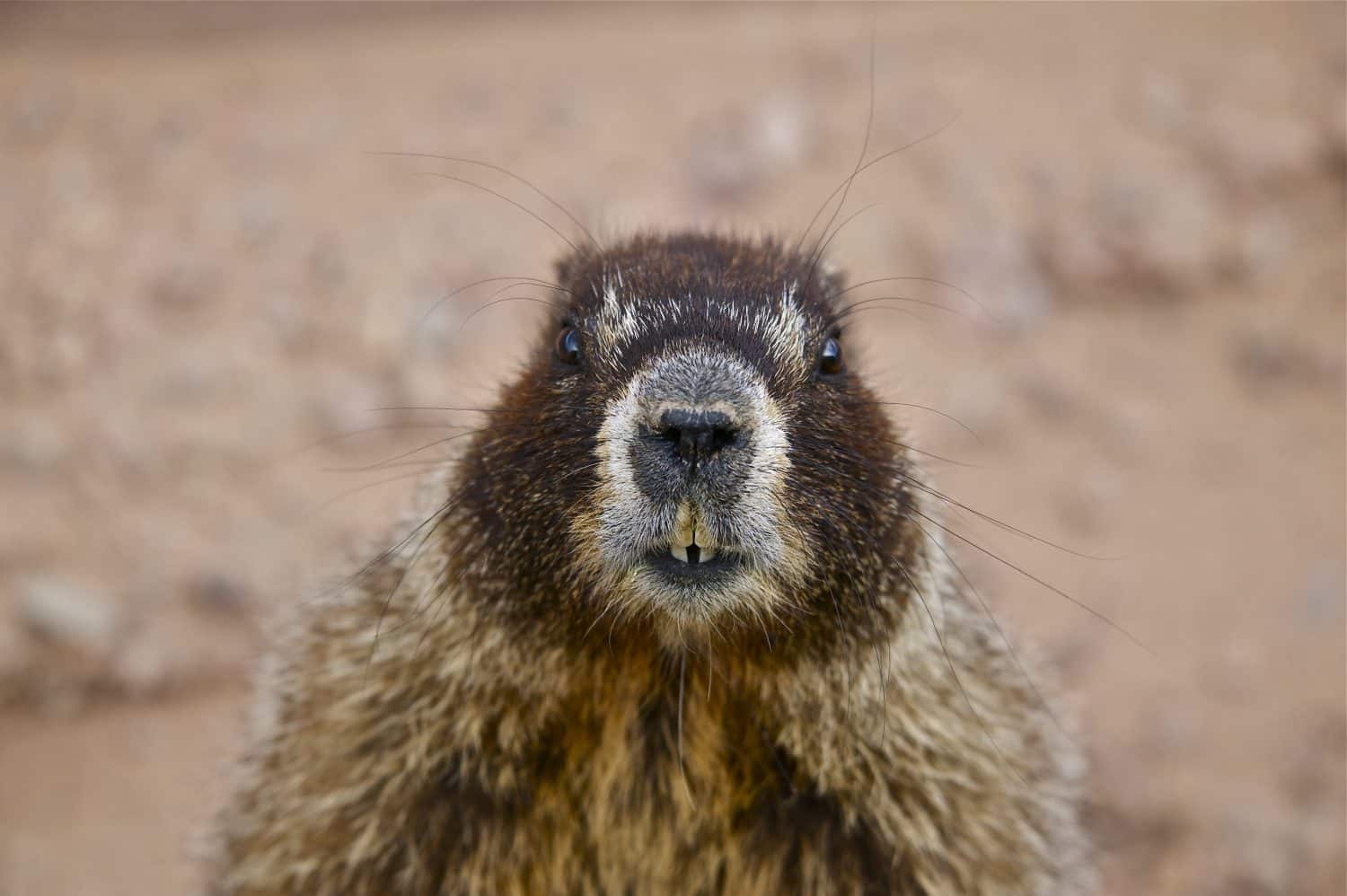Pikes Peak is a National Historic Landmark that was carved by glaciers and provided a home for many Indigenous groups. Today, the beautiful scenery from the top of the impressive Colorado mountain brings people from all over the world to explore. But how tall is Pikes Peak? Keep reading to learn more about the famous summit that nearly reaches the sun.
How Tall Is Pikes Peak?

Pikes Peak is 14,115 feet tall and only 10 miles away from Colorado Springs.
©Jaminnbenji/Shutterstock.com
So, how tall is Pikes Peak? Pikes Peak is 14,115 feet tall and is located in Pike National Forest. The fourteener is a peak at the front of the Rocky Mountains, only 10 miles west of the bustling Colorado Springs. While the peak only ranks 32nd in elevation compared to the other Colorado summits, it’s famous for its prominence and accessibility.
If hiking isn’t your thing, that’s okay. You can ascend the mountain by vehicle. Follow the Pikes Peak Highway, Barr Trail, The Broadmoor Manitou, or the Pikes Peak Cog Highway. Moreover, you can visit various lakes or the Summit Visitor Center. You can also watch or participate in the annual Pikes Peak Ascent, the Pikes Peak Hill Climb, and the Peak Cycling Hill Climb. Whether you visit the fourteener by foot or vehicle, you’ll enjoy the 360-view of the sprawling landscape.
A Brief History of Pikes Peak

The Ute people called Pikes Peak Tava-kaavi meaning “Sun Mountain.”
©EQRoy/Shutterstock.com
Pikes Peak existed long before the first people settled on its soil. One of the first inhabitants of the area was the Colorado Mountain Ute people. They named the tall summit Tava-kaavi, which means “Sun Mountain” because of its height. Some people living around the mountain called themselves the Tabeguache or “People of Sun Mountain.” However, different groups of people have called it many names over the centuries.
Lieutenant Zebulon Pike came across Pike’s Peak in 1806 but couldn’t complete the hike due to the thick snow that covered the mountainside. He was sent initially to the area in search of the source of the Arkansas and Red Rivers and to explore the natural resources in the newly acquired state. At the time, Pikes Peaks was called “the Grand Peak.” Pike underestimated the mountain’s size and was unprepared for the journey.
The first recorded successful climb of the summit is from 1820. Dr. Edwin James, J. Verplank, and Z. Wilson completed the ascent. These men from Major Stephen Harriman Long’s expedition took only two days to reach the top. What’s so impressive about the expedition is that it was the first recorded ascent of any 14,000-foot mountain in the United States.
Long named the daunting peak after James; however, the name “James Peak” only stuck for a few decades. Instead, Pikes Peak gained more traction. The name became official when it was used as part of the slogan “Pikes Peak or Bust” during the 1859 gold rush that attracted thousands to the mountain.
The view from the top of Pikes Peak also inspired “America the Beautiful” by Katherine Lee Bates in 1893. In fact, the line “purple mountain majesties” refers to Pikes Peak.
How Does Pikes Peak Compare to Other Peaks?

Pikes Peak ranks 32nd in elevation among the Colorado summits.
©kaitlin schwetz/Shutterstock.com
Pikes Peak is a national icon representing the natural beauty of Colorado and the American West. The enchanting summit has inspired many forms of art and is a travel destination for nature lovers because of its size. See how tall Pikes Peak is in comparison to some of the highest mountains in the state as well as some of the most famous mountains in the country.
Mountains in Colorado
| Summit Name | Location | Height |
|---|---|---|
| Mount Elbert | White River National Forest | 14, 433 |
| Mount Massive | San Isabel National Forest | 14,428 |
| Mount Harvard | San Isabel National Forest | 14,421 |
| Blanca Peak | Sangre de Cristo Range | 14,351 |
| La Plata Peak | San Isabel National Forest | 14,343 |
Mountains Throughout the U.S.
| Summit Name | State | Height |
|---|---|---|
| Denali | Alaska | 20,310 |
| Mount Whitney | California | 14,494 |
| Mount Rainier | Washington | 14,411 |
| Grand Teton | Wyoming | 13,770 |
| Mauna Kea | Hawaii | 13,803 |
Wildlife Near Pikes Peak

Yellow-bellied marmots live in the Alpine Zone of Pikes Peak.
©Virrage Images/Shutterstock.com
An abundance of wildlife calls Pikes Peak home. Visitors often see deer, elk, yellow-bellied marmots, and bighorn sheep. In fact, the summit is home to one of Colorado’s largest bighorn sheep herds. As you continue up the mountain, you will pass through four distinct zones with their own wildlife.
The first zone is the Eastern Plains Zone. At 6,571 feet, it’s filled with wildflowers and grasslands, making the perfect living space for prairie dogs and rabbits. Next is the Foothills Zone, from over 6,000 to 8,000 feet, where you can find squirrels, deer, and the occasional bear. From 8,000 to 10,000 feet, the Montane Zone features forest pines and colorful aspen trees. Try to spot an elk or mountain lion through the trees, from a distance, of course.
The next two zones take you into the coldest regions on the mountain. From 10,000 to 11,500 feet, the Subalpine Zone gives way to 2,000-year-old Bristlecone pine trees, chipmunks, and snowshoe hares. Here, you’ll start to feel the altitude.
Lastly, the Alpine Zone brings you into the tundra, where only plants that survive freezing cold temperatures grow. You will also enter the home of the bighorn sheep and the yellow-bellied marmots, also called “whistling pigs,” because of the ear-splitting whistle they make to alert their madness of marmots. You’ll want to cover your ears when you hear it.
The photo featured at the top of this post is © Jessica R. McNair/Shutterstock.com
Thank you for reading! Have some feedback for us? Contact the AZ Animals editorial team.






